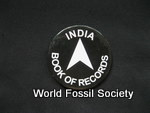Researchers have discovered two small dinosaurs together with a lagerpetid, a group of animals that are recognized as precursors of dinosaurs. The discovery made in Brazil and reported in the Cell Press journal Current Biology on November 10 represents the first time that a dinosaur and a dinosaur precursor have ever been found together. The […]
Archive for the ‘Featured Post’ Category
Plate tectonics cannot explain dynamics of Earth and crust formation more than three billion years ago
 November 10th, 2016
November 10th, 2016  Riffin
Riffin The current theory of continental drift provides a good model for understanding terrestrial processes through history. However, while plate tectonics is able to successfully shed light on processes up to 3 billion years ago, the theory isn’t sufficient in explaining the dynamics of Earth and crust formation before that point and through to the earliest […]
WFS News: Fossil clues to aftermath of dinosaur asteroid strike
 November 7th, 2016
November 7th, 2016  Riffin
Riffin Rapid recovery of Patagonian plant–insect associations after the end-Cretaceous extinction Michael P. Donovan,, Ari Iglesias,, Peter Wilf,, Conrad C. Labandeira, & N. Rubén Cúneo The Southern Hemisphere may have provided biodiversity refugia after the Cretaceous/Palaeogene (K/Pg) mass extinction. However, few extinction and recovery studies have been conducted in the terrestrial realm using well-dated macrofossil sites that […]
Atom-by-atom growth chart for shells helps decode past climate
 October 31st, 2016
October 31st, 2016  Riffin
Riffin For the first time scientists can see how the shells of tiny marine organisms grow atom-by-atom, a new study reports. The advance provides new insights into the mechanisms of biomineralization and will improve our understanding of environmental change in Earth’s past. Led by researchers from the University of California, Davis and the University of Washington, […]
Fossilized dinosaur brain tissue identified for the first time : WFS News
 October 28th, 2016
October 28th, 2016  Riffin
Riffin Researchers have identified the first known example of fossilised brain tissue in a dinosaur from Sussex. The tissues resemble those seen in modern crocodiles and birds. An unassuming brown pebble, found more than a decade ago by a fossil hunter in Sussex, has been confirmed as the first example of fossilised brain tissue from a […]
Qilinyu : A Fish fossil sheds light on jaw evolution
 October 24th, 2016
October 24th, 2016  Riffin
Riffin @WFS,World Fossil Society,Riffin T Sajeev,Russel T Sajeev A bottom-dwelling, mud-grubbing, armoured fish that swam in tropical seas 423 million years ago is fundamentally changing the understanding of the evolution of an indisputably indispensable anatomical feature: the jaw. Scientists have unearthed in China’s Yunnan province fossils of a primordial fish called Qilinyu rostrata that was about […]
Savannasaurus : New Australian sauropod
 October 22nd, 2016
October 22nd, 2016  Riffin
Riffin @WFS,World Fossil Society,Riffin T Sajeev,Russel T Sajeev The Australian Age of Dinosaurs Museum today announced the naming of Savannasaurus elliottorum, a new genus and species of dinosaur from western Queensland, Australia. The bones come from the Winton Formation, a geological deposit approximately 95 million years old. The paper naming the new dinosaur was published on […]
WFS News: How Earth’s oldest animals were fossilized
 October 20th, 2016
October 20th, 2016  Riffin
Riffin @WFS,World Fossil Society,Riffin T Sajeev,Russel T sajeev The fossils are among the strangest ever found: a corkscrew-shaped tube, an eight-armed spiral, and a mysterious ropelike creature that might have engaged in the oldest known sexual reproduction among animals. They are Earth’s oldest complex organisms, dating back to 571 million years ago, and found on every […]
WFS News: Skin impressions of dinosaur found
 October 18th, 2016
October 18th, 2016  Riffin
Riffin @WFS,World Fossil Society,Riffin T Sajeev,Russel T Sajeev Researchers from the Universitat Autònoma de Barcelona (UAB) in collaboration with the Institut Català de Paleontologia Miquel Crusafont (ICP), have discovered in Vallcebre (Barcelona) an impression fossil with the surface of the skin of a dinosaur from the Late Cretaceous, a period right before their extinction. Its characteristics […]
WFS News: Stegosaurus plates may have differed between male, female
 October 13th, 2016
October 13th, 2016  Riffin
Riffin Stegosaurus, a large, herbivorous dinosaur with two staggered rows of bony plates along its back and two pairs of spikes at the end of its tail, lived roughly 150 million years ago during the Late Jurassic in the western United States. Some individuals had wide plates, some had tall, with the wide plates being up […]



 Posted in
Posted in  Tags:
Tags: 
